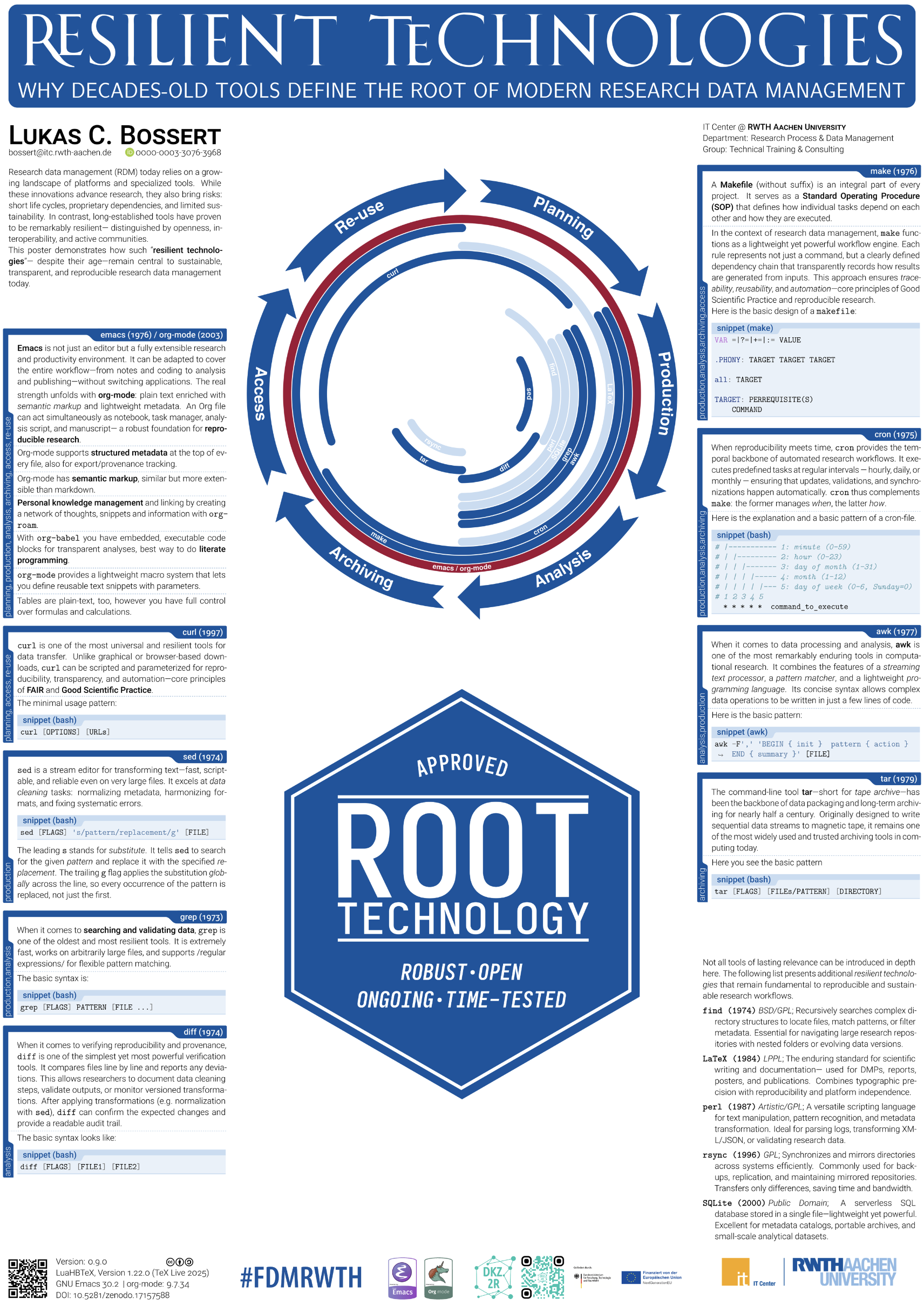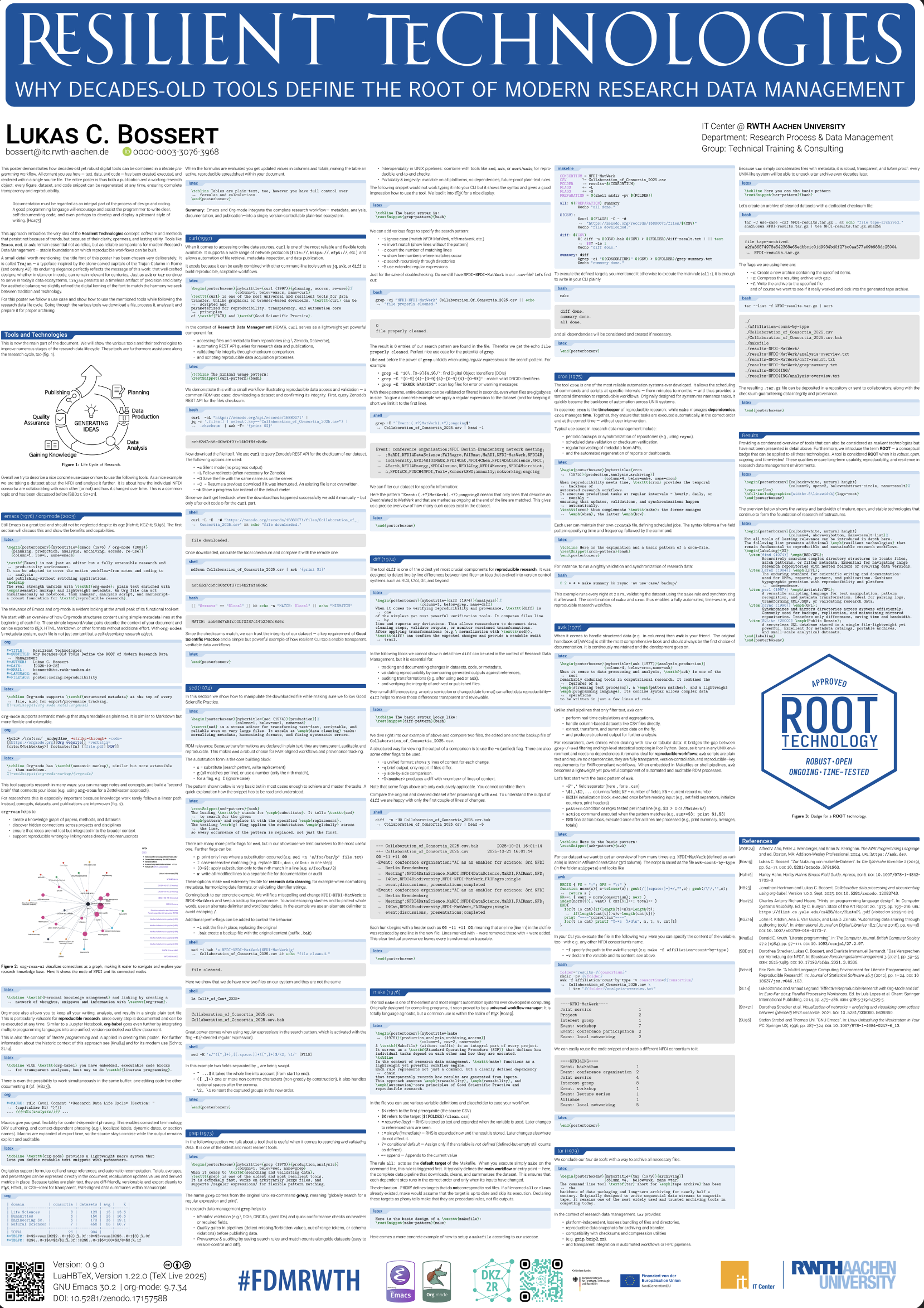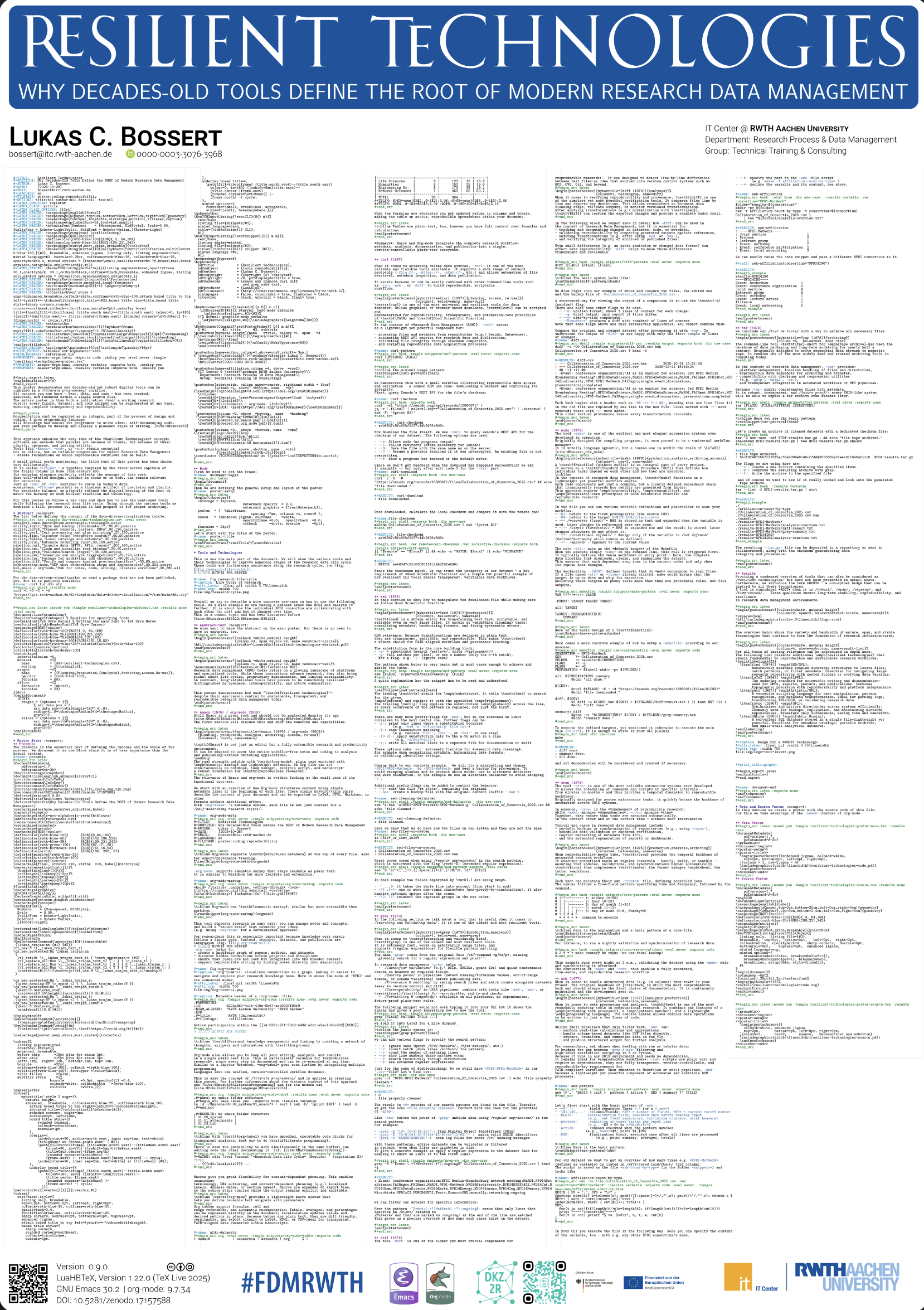Main poster maps long-lived tools to the research-data life cycle (Plan → Produce → Analyze → Archive → Access → Re-use). Emacs/Org for provenance, Make for rebuilds, curl/sed/grep/diff for intake & checks, awk for tables, cron for timing, tar/rsync for packaging/sync, plus SQLite/LaTeX/find. Pipelines you can re-run years later. Feedback welcome! #ROOT #ResilientTech #RDM #NFDI #Emacs #orgmode #literateprogramming #OpenScience #tools #researchdatamanagement
https://doi.org/10.5281/zenodo.17157588
Post
The meta poster frames the concept: clarity + openness → resilience. It traces the lineage from Knuth’s Literate Programming to Org-mode and NFDI practice, and introduces the ROOT badge as a compact signal for robust, open, ongoing, time-tested tools. It also spotlights resilient stalwarts often hiding in plain sight—find, LaTeX, perl, rsync, SQLite—showing why they remain reliable RDM building blocks.
#ResilientTech #LiterateProgramming #OrgMode #RDM #NFDI #FAIR https://doi.org/10.5281/zenodo.17157588
The source poster shows the guts: Emacs/Org-babel + LaTeX; noweb tangling; minted listings; multi-column layout. The complete source code! The poster is both publication and working research object. Example flow: query Zenodo via curl, download dataset, compute checksum, compare, then proceed with scripted transforms—transparent steps you can re-run. Everything is fully specified, so you can regenerate all of it from source. #Emacs #OrgBabel #TeXLaTeX #orgmode
https://doi.org/10.5281/zenodo.17157588
bonfire.cafe
A space for Bonfire maintainers and contributors to communicate


